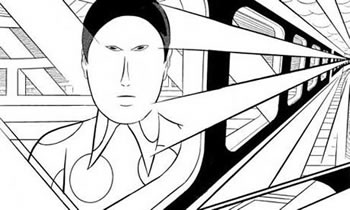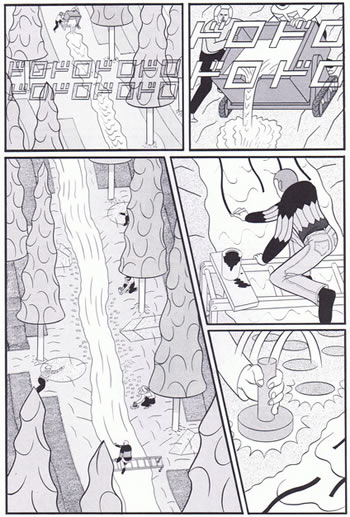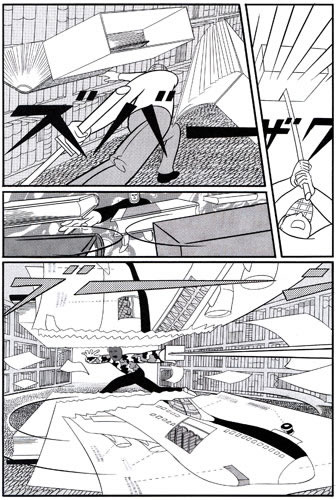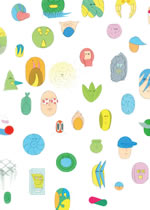Yuichi Yokoyama:
Travel
I hope you will be able to join me on 29 May, 2009, when I will be exploring the evolution of modern manga and its connections and contrasts with Japanese artistic traditions in ‘Mangaisme’ - the New Japonisme?, a talk I’m giving at The Royal Academy Of Arts in London. In anticipation of this, below I look at the extraordinary contemporary manga of Yuichi Yokoyama.
"I want to draw the pure appearance of things. My aim is not to represent the inner life of humans. When insects or birds look at humans, they’re not interested in their name or their personality. I am prolonging that detached point of view of the human world."
Yuichi Yokoyama has described his unsettlingly aloof manga as "serialised paintings". After studying oil painting, teaching watercolours and creating sign-like paintings for four or five years, he became fascinated with going beyond one isolated painting to imagine what comes before and after it. A single image remains the spark for his narratives which he envisages as never ending and only ever provisionally finished. In his early shorter works collected in New Engineering, Yokoyama tended to minimise the use of dialogue balloons and emphasise figures and forms in wild visual choreographies drawn with diagrammatic precision, accompanied by an often "noisy" soundtrack of hand-lettered onomatopoeia.

In Travel, his 195-page graphic novel originally published in France in 2005, he eschews speech and sound entirely to transport the reader-viewer to that special limbo, being between one place and the next, in a transitory state. Yokoyama evokes the detached, slightly wary observation between strangers on a train as they try to avoid physical and eye contact and preserve their personal space. His protagonists, all of them male, mostly maintain what he describes in the footnotes as "severe and urban expressions on their faces", cool, indifferent, almost blank, like fashion models, looking without seeing, with a hint of homoeroticism in these male gazes. He revels in the textures, organic and man-made, the plays of light, shadow, smoke, the everchanging landscapes and cityscapes rushing by, the varied designs of seating, clothes, advertisements.

Many pages play with trompe l’oeil effects and puzzle-like viewpoints forcing us to re-orientate and observe attentively. Whose viewpoint are we seeing? And from what angle? Whose eyes are we looking through? Are they human eyes at all? He shows us a marvel of a smooth-running integrated transport system, where congestion never causes delays and huge numbers are in constant process and progress. Yokoyama’s heightened sense of presence while in motion invites us to re-evaluate how strange our own travelling experiences can be.

For the first time in Europe, his manga and paintings are being exhibited until June 21 in Individual Diagnosis at the Lucerne Museum of Art, alongside Britain’s David Shrigley and the Geneva-based duo Reumann and Robel alias Elvis Studio. Some of his latest unfolding manga see him shifting to an intentionally looser marker-pen style and a uniform grid of panels resembling an animation storyboard. Like his open-ended tales, Yokoyama’s exploratory practice is definitely "to be continued…"
Posted: May 24, 2009New Engineering, Travel and Painting are published by PictureBox Inc. This article above first appeared in Art Review #32 in May 2009. Art Review is a monthly publication dedicated to contemporary art and is essential reading for a global community of artists and gallerists, collectors, curators and indeed anyone with an interest in art. Every issue of Art Review is available to read free online here.















